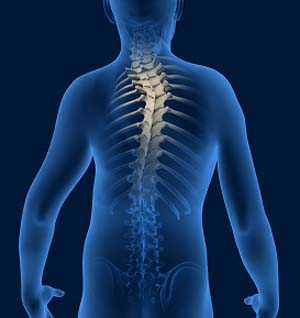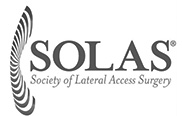Spinal Deformity

The Spine, which is composed of several vertebrae, provides stability to the upper body. The spine has two gentle curves when viewed from the side and appears straight when viewed from the front. An exaggeration of these curves results in a physical deformity. Spine deformity refers to the abnormal curvature of the spine.
Scoliosis, an abnormal lateral curvature of the spine at the thoracic (mid-back) and lumbar (low back) region, is the most common cause of spinal deformity. The curvature may be either an “S”- shaped or “C” shaped. As scoliosis progresses, it can cause a twisting of the spine resulting in structural abnormalities such as distortion of the spine, uneven hips, and a rib hump on the back. In some cases, scoliosis can also be caused by muscle spasms in the back.
Types of Scoliosis
Scoliosis can be categorized into four basic types depending on the age, and cause of the spinal curvature:
Idiopathic Scoliosis: It refers to the type of scoliosis where the underlying cause is unknown. It is further categorized into 3 subtypes: Infantile scoliosis (birth to 3 years of age), Juvenile scoliosis (3 to 10 years of age) and Adolescent Scoliosis (above 10 years of age)
Congenital Scoliosis: This type of scoliosis is present since birth and may be caused by malformed vertebrae.
Neuromuscular Scoliosis: This type of scoliosis results from muscular weakness or neurological abnormalities.
Degenerative Scoliosis: This type of scoliosis may result from a weakening of the spinal vertebral discs with advancing age.
Further, the spine may develop a compensatory curve to compensate for the major scoliotic curve and to maintain spinal balance. This curve is usually of a lesser degree than the major scoliotic curve.
Symptoms
Symptoms of scoliosis may include the following:
Uneven hips or shoulders (one shoulder is more prominent and raised than the other)
Leg length discrepancy
Walking abnormalities
Visible curvature of the spine
Uneven trouser lengths
Clothes don't fit properly
Back ache
Difficulty breathing (severe scoliosis)
Diagnosis
Your physician will diagnose scoliosis based on your family history and medical history, along with a physical and neurological examination. During physical examination, your doctor will evaluate cardiopulmonary (heart and lung) function and range of motion of the spine. Your doctor may palpate (feel) the spine for abnormalities. Your doctor may perform an Adam's forward bending test, in which you are asked to bend forward at the waist and the doctor will check for the symmetry of the hips and shoulders, ribs or any other prominence. A scoliometer is used to measure the spinal curvature.
The shape of the spine is assessed using a plumb line test. During this test a plumb line or weighted string is held from the back of the neck and dropped down to hang freely. If the plumb line does not hang between the buttocks, scoliosis may be suspected.
A neurologic examination is conducted to assess your reflexes, muscle strength and sensations. X-ray of the spine is taken from the front and sides to confirm the diagnosis as well as to measure the severity of the curvature.
Treatment
Treatment of scoliosis is based on the person’s age, the degree and pattern of the curve, and the type and cause of scoliosis. Treatment options include:
Observation: Children who have mild scoliosis with a curve of less than 15 to 20 degrees may be considered for observation to monitor any changes in the curvature of their spine.
Spinal bracing: Your physician may recommend a spinal brace to prevent worsening of the curve with growth and also in cases where the curve is between 20 to 40 degrees. Bracing is usually indicated to slow the progression of scoliosis.
Surgery: Surgery includes spinal fusion and instrumentation. The aim of the surgery is to halt the progression of the curve, treat the deformity, and stabilize the spine.
Your surgeon will discuss the surgical options as well as the potential risks and benefits with you. Your doctor is your best source of information to answer all your questions and help you understand the condition better.
Related Topics:
- Cervical Disc Herniation
- Cervical Myelopathy
- Cervical Stenosis
- Chronic Neck Pain
- Degenerative Disc Disease
- Degenerative Scoliosis
- Herniated Disc
- Kyphosis
- Lumbar Disc Herniation
- Lumbar Radiculopathy
- Sciatica
- Spina Bifida
- Spinal Deformity
- Spinal Stenosis
- Spondylolisthesis
- Spondylolysis
- Vertebral Compression Fractures








